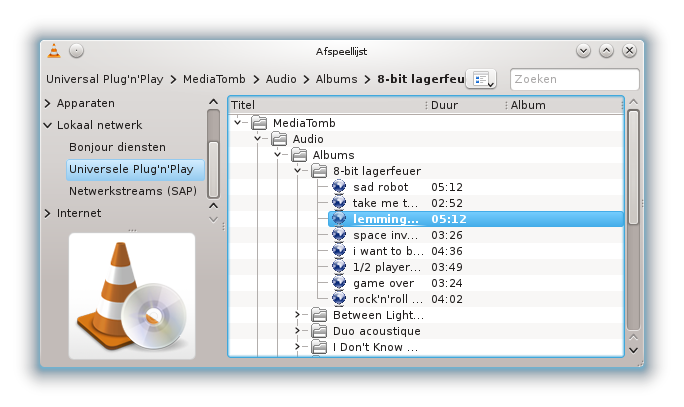
To solve this I had to call the ConnectionManager::GetProtocolInfo() action to get a CSV list of all the Media formats supported by the device, maintain a manual list of all possible Media format profiles defined by and others within VLC, find a profile that best describes the file the user is trying to play and then compare that profile to the device profiles to make sure if it can play it.Īnd if a device does not support the profile of the file we are trying to play then we transcode the file to a format that the device supports, on the fly, and stream it to the device.Īs you can imagine this is quite an involved process more so with the transcoding since we had to make sure the transcoding will work in a reasonable amount of time on every platform VLC is run i.e.

Having a working tranport is still half of story, another important aspect of casting is to make sure the device is able to decode the file that you are trying to play. I say almost all because legacy DLNA renderers (below DLNA v1.5) and renderers not implementing the AVTransport::SetAVTransportURI action are not yet supported. Much of that logic is similar to how chromecast creates a stream_out except that we use UPnP Actions represented as SOAP requests instead of the horror that is Google’s protobuf to talk to the device.Īfter going through the DLNA guidelines and the UPnP AV spec, I added functions that called the actions required to talk to any DLNA device implementing the AVTransport Service and we had a working implementation of VLC acting as a UPnP control point that was able to cast to almost all DLNA renderers. Now to actually be able to cast to a device we need to create a stream_out VLC module with http as the transport method. After adapting that patch we were now able to discover and list any DLNA renderers available on the same network. Someone had partially done this before me but not yet merged, partly due to the problem I explained and solved in the previous post of this series. To do that we use the libupnp library to find the devices and call the VLC vlc_renderer_item_new() function for each device with relevant information so that they can be show to the user in a menu and then select which device to cast to. capable of playing a video/audio stream that we may cast to it. The next step in adding DLNA support was adding a renderer_discovery module responsible for searching and adding devices that are Media Renderers i.e. This allows you to cast any video or audio from any other device to your connected TV.




 0 kommentar(er)
0 kommentar(er)
